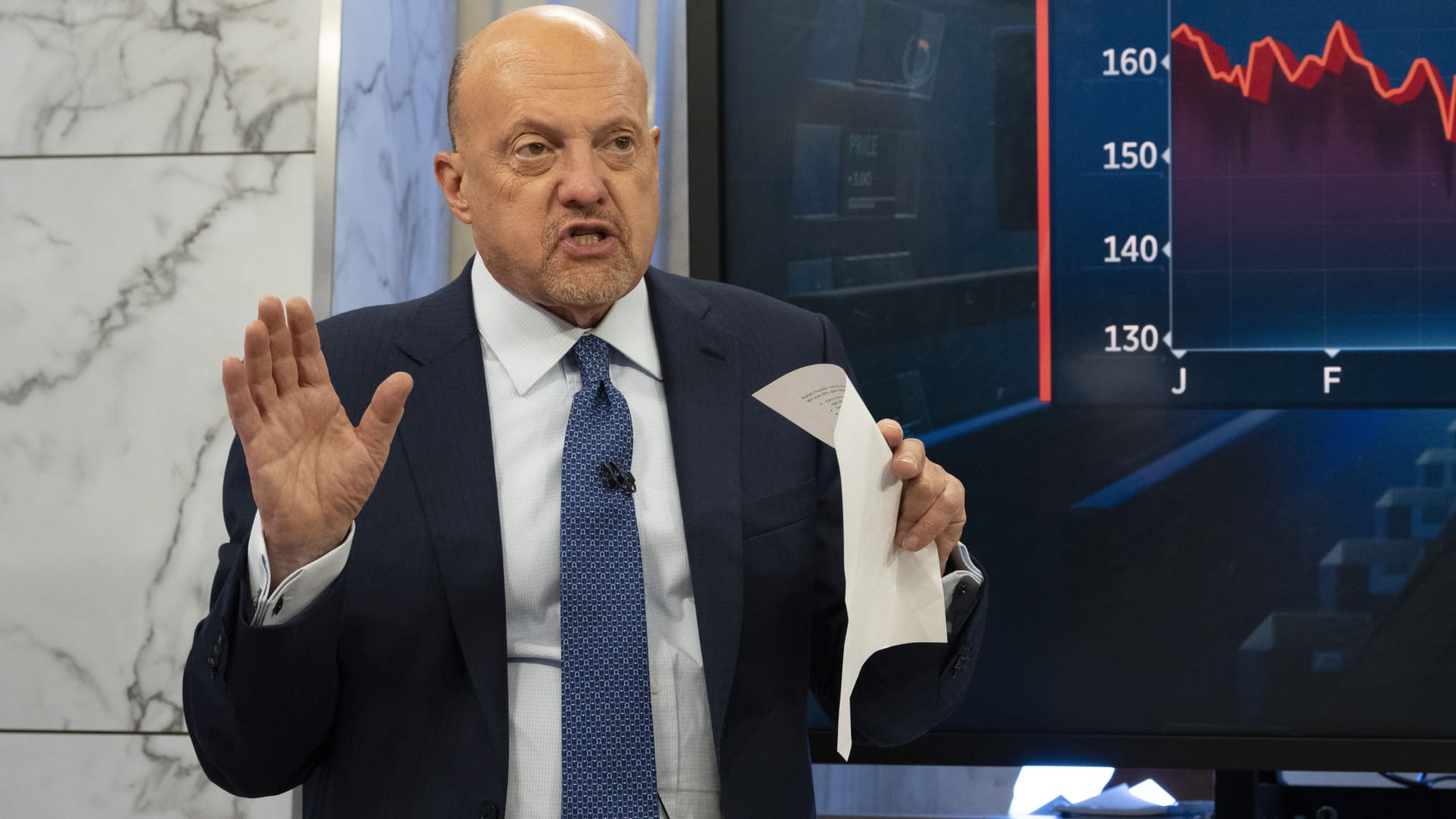We the stockholders are in a darned box and deserve better. We are owed an opportunity to make money that is dependent — at least somewhat — on a company’s fundamentals, and not just macroeconomic concerns. We deserve higher price-to-earnings multiples than the market gives us for the success of an enterprise, and not the severe judgment of a bond market that has been proven wrong time and again. Just consider all the stock gains made in the shadows of an inverted yield curve that proved incredibly wrong. The predictive value of these all-knowing pieces of paper has been revealed to be fraudulent and comical. The greatest expansion of our century — not the oft-predicted recession — occurred under the “un-watchful” gaze of bond buyers who believed the price on the 30-year Treasury was right. We can blame short-sighted owners, especially the banks. These financial institutions have been repositories of idiocy that is now costing them price-to-earnings multiples for their own enterprises. In fact, the valuations are now astoundingly below the level of this spring, when they were on death’s door after Signature Bank, Silicon Valley Bank, and First Republic Bank collapsed. They are reluctant sellers. We can blame the foreign sellers who seem as oblivious as they were when buying. The Chinese in particular are relentless. That’s a sure tell in itself of the shakiness of a country that now derives its power more by an insurgent military than a rising gross domestic product. Finally, we can blame the two evil twins: An endless Treasury issuance for an unfathomable budget deficit, and nightmarish quantitative tightening (QT) sales that have caused us misery and helped rates to skyrocket. The tyrannical linkage continues to control more than ever. We are about halfway through the most important part of earnings season, and it has been nothing short of a fiasco — despite incredible margin expansion and decent sales growth that has defied predictability. In short, we are doing too well for the wizened members of the Federal Reserve, who have sadly proven incredibly prescient. How can you not keep the federal funds rate higher for longer when you get a U.S. GDP number that surpasses the real GDP of China. I say real GDP because accurate numbers from that opaque dictatorship are hard to come by. But can we accept that it is on a path to oblivion while we can’t stop our runaway train of an economy. We keep slapping interest rate raises on the rails of that train — and it just keeps humming over them. All the while we hear the phony jeremiads of never-defrocked economists who would be laughed out of the dugout or banished to the sidelines if this were a pro sport. These clowns aren’t even old soldiers that fade away. They just continue to be unhelpful. They are joined by the sirens of the billionaire boys who know little of individual stocks. Enough stone throwing from the glass house of Disney (DIS), Estee Lauder (EL) and Danaher (DHR), Club names all. How the heck do we get out of the box? Two ways, only one of which is palatable. First, let’s define the box. Half of the box is market’s rate of interest set by the above culprits. The other half is the funds rate controlled by the Fed. We are not going to get out of the box until one of these rates — the market’s or the Fed’s — goes down. The more constricting half of the box is the 10-, 20- and 30-year prices. The 20-year is rarely talked about, but is the chief predictor of the 30-year and it gives us my 6% reading for the longer-dated paper. Let’s discuss both. We have a Fed meeting this week where we will learn where the manmade part of the yield curve stands. Fed Chair Jerome Powell, the only prescient guy in this whole shooting match, knows that he can’t relent until he gets not one or two but six quarters of benign readings from all sorts of indicators. Powell is the Great Synthesizer, assessing everything from homes to food to rent to gasoline and the myriad and sundry day-to-day elements that define our higher price regime. He sees the three Oreos taken out of the bag and the higher price nonetheless. He knows the dog food bag is now $50, not $40, and yet contains 18 pounds not 20 pounds. He can see that the medium home price for this nation has come down from about $450,000 to $418,800, but that it’s still up from the benchmark pre-Covid level of $329,500, an increase of 27%, down from 40%. We in the media all seem to think that’s a win. We do not understand that directionally it’s a win, but Powell wants a return to 2019, not a slower increase or a subtle decrease from the top. In other words, Powell still has a not-so-great hand against inflation. He’s got a three of a kind. But inflation has a full house. In this environment, all Powell can do is ratify a stance that he hopes will allow him to draw some better cards in the future. Given the consequences of calling the rate hikes finished, he can’t afford to help us. The average person hurt by higher rates is collateral damage to the greater anti-inflation mission. The average stockholder isn’t even at the card table. So we can’t look to Powell and company for relief from the short end. Moreover, we can’t even be sure they can provide relief. It’s the longer end of the box, though, that is more barbed and sharper — to switch analogues midstream to a prison. That’s because as manmade as the fed funds rate is to the equation, the inescapable direction of that force of nature that is the 30-year bond is more important. Think of all that the 30-year controls. It’s what pulls out the trampoline of the dividend. It’s what makes all discounted cash flows not worthless, but certainly worth less. It’s a certain path in a tempest of bottomless risk, one that beckons to a beach of pretty darned good returns. This is the real enemy, not the Fed. So what stops its increasing attractiveness? Some would say the Fed, which could erect a price floor if it started to cut rates. I acknowledge that, but am not sure that does anything but steepen the yield curve because there are sellers who are agnostic to levels. They would dump at 5%, at 5.5%, and they would dump at 6% simply because they know only to dump. Can it be stopped? The Fed can cease to sell long paper and let it run off. But as long as the economic train stays on the rails, the central bank must try to slow it down by using its QT supply. At least the Fed, unlike the Treasury, doesn’t have to finance the forever deficit. However, not all selling must cease to stem the p-e erosion. All the market has to do is reach a price level that is too darned compelling. As you can tell from the myriad “failed” auctions — like this past week’s disastrous 5-year — we aren’t there yet. We won’t be there until auctions start to succeed because the market needs paper as a matter of course. It encourages buyers who are opportunistic. That level beckons. But to get there, we have to hear painfully repetitive journalists tell us that we haven’t seen these rates since 2006. No kidding. That was the last time we had such a hot economy so why shouldn’t rates mirror that era? We have a 4.9% GDP growth, albeit with lowering inflation unlike 2006. But the notion that we should have lower rates is a judgment best left to those with no understanding of history. Why does it beckon at all? And who says we won’t see higher rates until the horizon is at last upon us? Because the blessed short rates can bring the horizon to us in admittedly painful way. We know the consumer has been hurt by what seems like an inflation spiral. The government numbers sure indicate that. But the Bureau of Costco (COST) tells us that prices are now up 2%, down from an increase of 5% not so long ago. We want price reductions? They are coming. Autos? Ford (F) stock didn’t go to $9 on the back of the labor strike. It went that way on fears of inventory and lower car prices because of higher financing costs. Homes are going down because of the higher costs of mortgages, even as (unlike the auto companies) the homebuilders refuse to comply with the laws of supply and demand. They are making fortunes because they refuse to destroy their own pricing. They are, in that way, like the Permian oil producers who refuse to destroy their own pricing by pumping less. The price of oil could be set here instead of in Russia and Saudi Arabia, but our companies have chosen to be takers not makers. So, do we have a p-e saving calvary coming in the form of the Fed? Not yet. Are we at a level where natural Treasury buyers, not feckless dealers, are willing to step in? Not yet. Only a combination of stable short rates and a Fed that’s done with QT can make that happen. And it won’t happen until we count off six months of lower prices. Time and price will get us there. Knowing the strength of the confining box we are in, it’s hard to have hope that this bearish phase will ever end. Know, however, that it will end when we get to a level that is ridiculously compelling. From 1981 to 1984, that was an interest rate in the teens, because inflation was running so hot. Now I think it is a fed funds rate of 6% because that could take mortgages to 10%, credit cards to 23% and car financing to as much as 15% for the bulk of cars, the current high end for the weakest of buyers. Demand destruction breeds a stable fed funds rate and the end of QT. Remember stocks will anticipate this gauntlet and the biggest point gains will come during the anticipatory period. This knowledge and our oversold position is why we keep putting money to work. The good news? We have journeyed quite far and now have a slowdown where “optimization” has replaced the phrase “slowing sales” and “resilience” has become the adjective of choice for the consumer. “Stubborn and strapped” would be better. We don’t have all that far to go, at least historically, to reach a level where it feels like we are in a recession, even though the figures tell us that we are nowhere near it. I think the figures will prove to be wrong. Both in time and price. Staying the course seems lame and lacking in rigor. But I have no choice but to opt for this strategy because when we reach that level where supply of bonds and demand of buyers is at least at equilibrium, look out above. (See here for a full list of the stocks in Jim Cramer’s Charitable Trust.) As a subscriber to the CNBC Investing Club with Jim Cramer, you will receive a trade alert before Jim makes a trade. Jim waits 45 minutes after sending a trade alert before buying or selling a stock in his charitable trust’s portfolio. If Jim has talked about a stock on CNBC TV, he waits 72 hours after issuing the trade alert before executing the trade. THE ABOVE INVESTING CLUB INFORMATION IS SUBJECT TO OUR TERMS AND CONDITIONS AND PRIVACY POLICY , TOGETHER WITH OUR DISCLAIMER . NO FIDUCIARY OBLIGATION OR DUTY EXISTS, OR IS CREATED, BY VIRTUE OF YOUR RECEIPT OF ANY INFORMATION PROVIDED IN CONNECTION WITH THE INVESTING CLUB. NO SPECIFIC OUTCOME OR PROFIT IS GUARANTEED.
We the stockholders are in a darned box and deserve better. We are owed an opportunity to make money that is dependent — at least somewhat — on a company’s fundamentals, and not just macroeconomic concerns. We deserve higher price-to-earnings multiples than the market gives us for the success of an enterprise, and not the severe judgment of a bond market that has been proven wrong time and again.
Read the full article here
Post Views: 290







